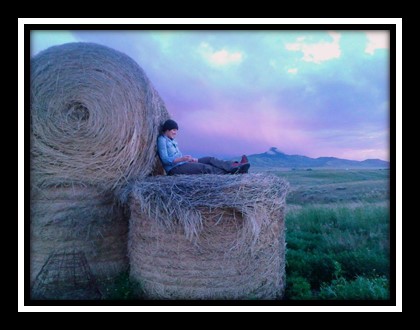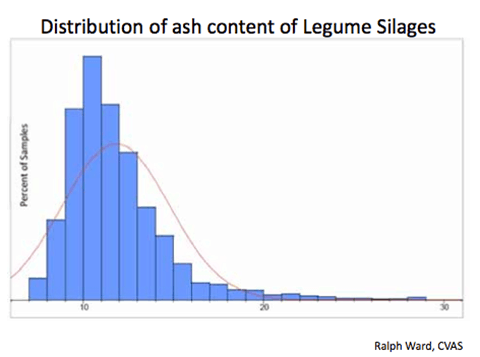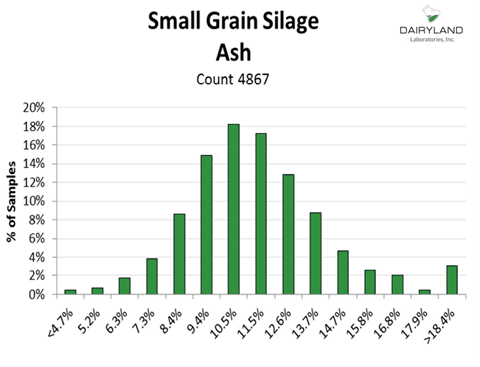
The new release of AMTS.Cattle™.Pro is an implementation of the CNCPS v 6.5 biology which enacts changes to equations reflective of the most current research on various inputs in the model. The primary changes are in the way we handle fiber digestion and nitrogen. The other area of change is in feed library values. Over a series of postings, we will be explaining what these adjustments will mean to nutritionists as they balance rations.
Our first two postings will focus on fiber both in terms of aNDFom and uNDF. Neither of these terms are new but sometimes with the alphabet soup of fiber terms it can be confusing as to what it actually means.
First aNDFom. In 2002 Mertens proposed a modification of the method to determine sodium sulfite and amylase-treated NDF to account for the presence of ash (dirt) in feedstuffs. Depending on the feed type, growing conditions, and even harvesting methods the presence of excessive ash in feed samples can lead to a false elevation of the NDF values of feed.
The Association of Official Analytical Chemists (AOAC) International is responsible for determining the standard methods used to generate reliable, accurate, precise, and routine analysis to describe feed characteristics. In order to enable nutritionists and modelers to predict animal outputs globally with accuracy it is critical to have standardized and agreed upon laboratory analysis methods. Mertens found that variations in aNDF values of feed were compounded by the presence of ash in samples. Without correction for ash NDF values could be falsely elevated and, as a result, predictions of animal outputs would have a greater degree of inaccuracy due to over prediction of aNDF. As an aside, aNDF and NDF are essentially the same terms—the “a” is routinely dropped for ease of reference.
To extract NDF, a portion of feed material is boiled in a detergent solution that is buffered to a pH of 7.0. When the fiber is recovered on glass fiber filter, much of the insoluble ash is recovered as well and will be accounted for as fiber. When NDF is determined on an organic matter basis, or ash-free, the residue from the separation of the fiber is placed in a furnace at approximately 600 degrees centigrade for two hours. All that is left after that heat treatment is residual ash that was collected with the fiber. In this manner the laboratory can determine the weight of the extracted fiber that was actually ash. Sources of the ash can be various; it can be incorporation of soil at harvest–large harvesting equipment moves fast and makes dust fly, rain splash of soil on a crop, irrigation water, flooding, or incorporation of mud while packing silo.
If this is important and has been known for a while, why have laboratories not provided NDF values on an organic matter basis? The European feed industry has traditionally utilized an organic matter approach so they already incorporate that information. Because the additional step of firing the feed samples, which can add a day on the time it takes to get sample results back, commercial laboratories in the U.S. traditionally have not reported aNDFom. Analysis for research purposes is performed both ways. However, as model predictions have grown increasingly accurate, the major feed labs in the U.S. have now decided to take the extra step for greater accuracy of predictions.
The charts below, courtesy of Cumberland Valley and Dairyland Labs, illustrate the variance of ash content in given feed samples.



According to information from CVAS, corn silage as a forage crop probably has as minimal a problem with insoluble ash as any forage crop. By contrast, sorghum and sorghum/sudan crops have very consistent issues with insoluble ash. Going forward, AMTS.Cattle™.Pro has made changes in the feed part of the program to both accept the analysis values from the labs and show the values in the feed specifications.
To summarize, the expected results of analyzing all raw materials using aNDFom is a NDF content drop of 2-5 % in the diet. In some cases, especially when forages have been subject to flooding or were irrigated crops harvested with large equipment, the drop can be as large as 10%.
The major labs in the U.S. have now adapted their methods to incorporate the aNDFom method for analysis of feeds. In AMTS.Cattle™.Pro we have changed our feed profile screens to reflect the new analysis information
